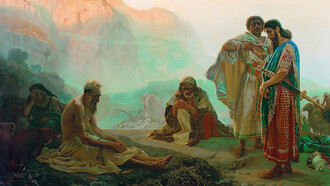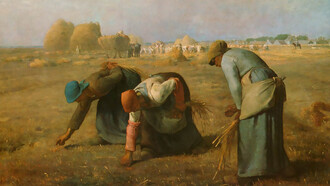Beginning in the mid-19th century, the Ottoman state began to pursue a campaign of Osmanlıcılık, which can be understood to be an official ‘Ottomanism,’ or shared Ottoman identity, intended to nurture social cohesion during a period of decline. Somewhat ironically, one of the central factors which enabled the rapid expansion and longevity of the Ottoman Empire (1299-1922) – that various religious and ethnic groups (millets) were allowed to maintain their own distinct cultural identities following integration in the empire – was quickly leading to its dissolution as several nationalist movements took root. The 19th century saw the independence of Serbian, Greek, Montenegrin, and Bulgarian vilayets (provinces) of the empire in rapid succession. These constituted victories for the individual national movements but anxiety-inducing circumstances for the Ottoman leadership.
At play were two distinct, but not mutually exclusive, types of nationalism. The first, what can be called an ethnic nationalism, leveraged a group’s common ancestry, race, language, and/or religious beliefs. Ethnic nationalism features prominently in the Kurdish nationalist movement, for example, which sought national self-determination into and throughout the 20th century, with the ‘nation’ defined along cultural, linguistic, and ethnic lines. The second type is civic nationalism, which is oriented around shared values, political duties and ideals, and allegiance to a state rather than ethnic or religious identity. While the second is often considered the more ‘artificial’ of the two types, both nationalisms are actively constructed by its adherents from a set of cultural tools, including imagery, language, and values. Further, the two kinds of nationalism are not in opposition and, in fact, often reinforce each other. For instance, the United States is often cited as an archetypal civic nationalism, but in practice it is, of course, imbued with an implied ethnic nationalism owing to the circumstances of its founding and its current ruling class, which have shaped notions of who is and is not American. In many ways, the 19th century Ottoman Empire was facing many of the same challenges, attempting to construct a modern, proto-civic nationalism in a context that was politically dominated by members of one specific ethnoreligious group.
In other words, in theory, while the brand of Ottoman nationalism envisioned by the Sublime Porte (the Ottoman leadership) was intended to transcend the differences between Turks, Greeks, Arabs, Jews, and other ethnic and religious communities across the empire, in practice it strongly resembled Turkish ethnonationalism.
Outside of the territory of present-day Türkiye, particularly in the predominantly Arab provinces of Syria and Lebanon, the top-down imposition of Osmanlıcılık echoed the Ottoman state’s imperialist ambitions in the empire’s periphery. These ambitions were rooted in the Tanzimat, a program of reforms beginning in the first half of the 19th century. Centralising policies under the Tanzimat represented the emergence of a uniquely Ottoman modernist civilising mission towards the Arab provinces. Echoing contemporaneous rhetoric in Europe that painted the Ottoman Empire as ‘backwards’ or impotent, this civilising mission established tiers of modernity that placed the Ottoman centre (Constantinople; Istanbul) as far away, metaphorically, from European modernity as it was from the ‘savagery’ and ‘primitivism’ of the Arab periphery.
As an aside, this period saw Osman Hamdi Bey’s rise to leadership of the Imperial Museum in Constantinople, which rapidly expanded its collections in its early years through the removal of antiquities from Arab provinces due to the latter’s perceived inability to manage them properly and the belief that the objects would benefit from increased viewership in the capital. To those familiar with the case studies of the Parthenon Marbles and Benin Bronzes (both of which I’ve previously written about), these are familiar imperial arguments to justify the colonial acquisition of cultural goods.
As a result of centralised, ‘modernising,’ top-down policies of the state, the attempted imposition of an empire-wide Ottoman identity could not be disassociated from its imperial underpinnings; it perpetuated the hierarchical relationship between ruler and ruled. Competing nationalist visions soon emerged as more suitable alternatives to Osmanlıcılık.
One was shared widely in a series of pamphlets issued in Ottoman Syria and Lebanon in the wake of the 1860 civil war. The pamphlets’ author, Butrus al-Bustani, proposed a secular liberal citizenship, which he argued could repair community relations and appropriately recognise the legacy of the events of 1860. This citizenship would have conflicted with Osmanlıcılık because it sought to “define an equitable relationship” between local tribes and the Ottoman state (Makdisi 2000: 6). The interference of European powers can also be credited to the complication of efforts to impose a shared Ottoman identity. In Lebanon, the Druze were largely aligned with France and the Maronites with Britain, but over time, both European powers began to take a greater interest in the other community as well. As a result, “an informal subjecthood to European powers developed alongside formal subjecthood to a changing Ottoman state” (Makdisi 2000: 68). In this context, a complex legacy of interfaith and tribal relations cannot easily be replaced by attempts at artificial identity formation, whether ethnoreligious or civic.
Within the territory of present-day Türkiye, the experience was somewhat different. The Turkish-leaning rhetoric of Osmanlıcılık found stronger roots across the region, though different factors certainly undermined its widespread acceptance. For example, consider the two communities of Edirne and Ankara, which would have constituted part of the Ottoman core for much of the empire’s history. Köksal (2008) rejects the idea that a centralised bureaucracy (which, as mentioned, was a defining characteristic of the late Ottoman Empire) would have inherently supported Ottoman territorial nationalism. Rather, she argues that local community networks were integral for this process. The example of Edirne saw success in this regard, where a tight-knit community was able to overcome sectarian differences and pursue policies of centralisation and communal civic identity. Ankara, however, was not characterised by such a community; as a result, the state’s efforts towards national identity formation and centralisation were less effective.
Köksal suggests that scholars’ understanding of nation-state building is often based on three main themes: centralisation, the creation of a national citizenship, and the formation of national identity. She argues that these themes, integral for a Western model of empire, are ultimately insufficient for the nationalist project of a multiethnic, multireligious empire such as the Ottomans’. As a result, she concludes that imperial policies pursuing an Ottoman identity often created tensions between the state and periphery, not entirely unlike those in late-19th-century Lebanon.
The first two decades of the 20th century saw a wave of democratic revolutions around the world, in Russia, Iran, Portugal, Mexico, China, and the Ottoman Empire. These revolutions were largely precipitated by the emergence and growth of a new class of intellectuals, who often, as in the case of the Ottoman Empire, allied themselves with the military (a class which Kurzman (2008), in fact, considers a frequent ‘antagonist’ of democracy). In the Ottoman Empire, this unlikely alliance resulted in the revolutionary Committee for Union and Progress (CUP).
In 1908, the Young Turk Revolution forced Sultan Abdulhamid II to reinstate the Ottoman constitution and declare multi-party politics. Initially, hopes were high across the region and Europe that a new relationship could be defined between state and populace, center and periphery, ruler and ruled. These hopes were soon dashed, however, by the continued imposition of (ineffective) centralisation policies, favoritism, and the Turkish nationalist movement. In Syria, for instance, local reformers wanted education to be conducted in Arabic, which was the language of the region and of Islam. The Ottoman state under the CUP opted instead to impose Ottoman Turkish, the language of the state. This had the paradoxical effect of encouraging Arab nationalist thought and rhetoric as a self-determinist alternative to state imperialism.
Centre-periphery tensions were further exacerbated by other centralising policies of the CUP, which aimed to consolidate national identity and political power out of fear of European encroachment. This had a similarly ironic effect of inciting unrest and political dissent in the Arab provinces, which culminated during the Arab Revolt (1914–1918), in which Arab tribes across the Levant and Hejaz joined with European forces against the German-allied Ottoman Empire, representing the final blow for the waning empire.
References
1 Haddad, Mahmoud. “The Rise of Arab Nationalism Reconsidered.” International Journal of Middle East Studies 26 (1994): 201-222.
2 Hanioğlu, Şükrü. “From Revolution to Imperial Collapse: The Longest Decade of the Late Ottoman Empire” in A Brief History of the Late Ottoman Empire. Princeton: Princeton University Press, 2008. 150-202.
3 Köksal, Yonca. “Rethinking Nationalism: State Projects and Community Networks in 19th-Century Ottoman Empire.” American Behavioral Scientist 51, no. 10 (2008): 1498-1515.
4 Kurzman, Charles. Democracy Denied, 1905-1915: Intellectuals and the Fate of Democracy. Cambridge, MA: Harvard University Press, 2008.
5 Makdisi, Ussama. “After 1860: Debating Religion, Reform, and Nationalism in the Ottoman Empire.” International Journal of Middle East Studies 34 (2002): 601-617.
6 Makdisi, Ussama. “Rethinking Ottoman Imperialism” in Jens Hanssen, Thomas Philipp, and Stefan Weber (ed.s) Empire in the City: Arab Provincial Capitals in Late Ottoman Empire. Beirut: Orient Institute der DMG, 2002. 29-48.
7 Makdisi, Ussama. The Culture of Sectarianism: Community, History, and Violence in Nineteenth-Century Ottoman Lebanon. Los Angeles: University of California Press, 2000.
8 Zurcher, Eric. “The Young Turks - Children of the Borderlands?” Leiden Project Working Papers Archive Department of Turkish Studies. Leiden: Universiteit Leiden, 2002. 1-9.















